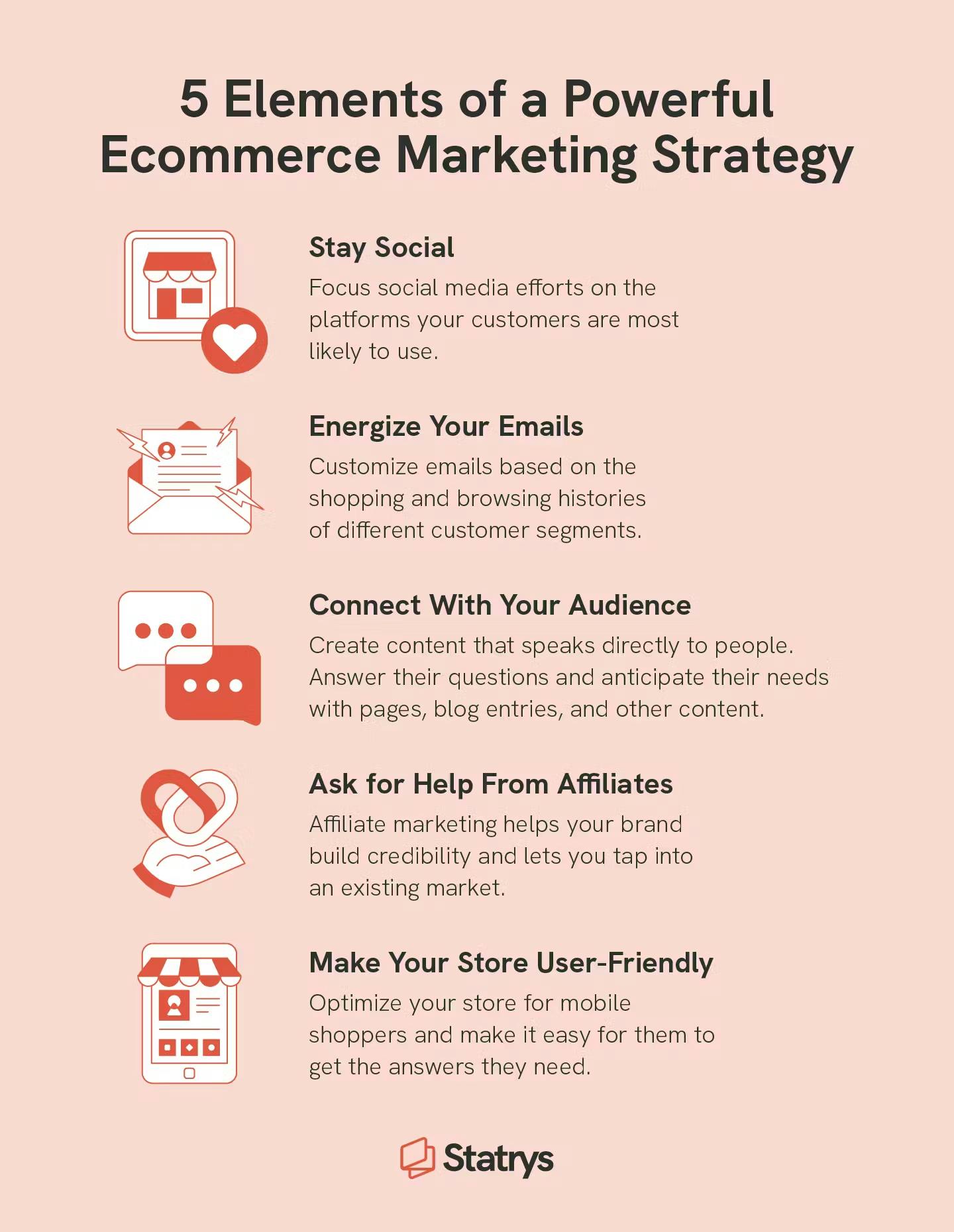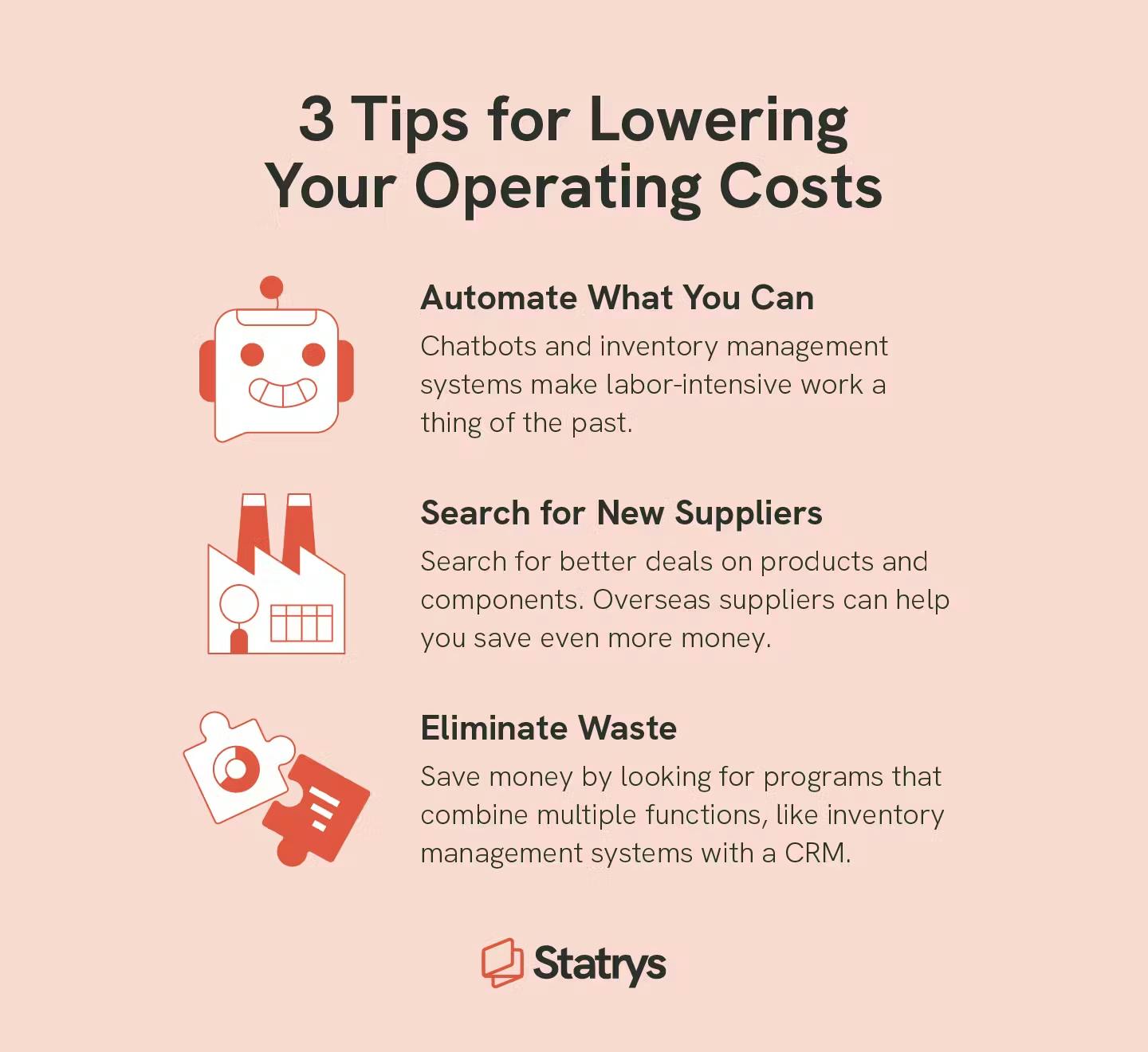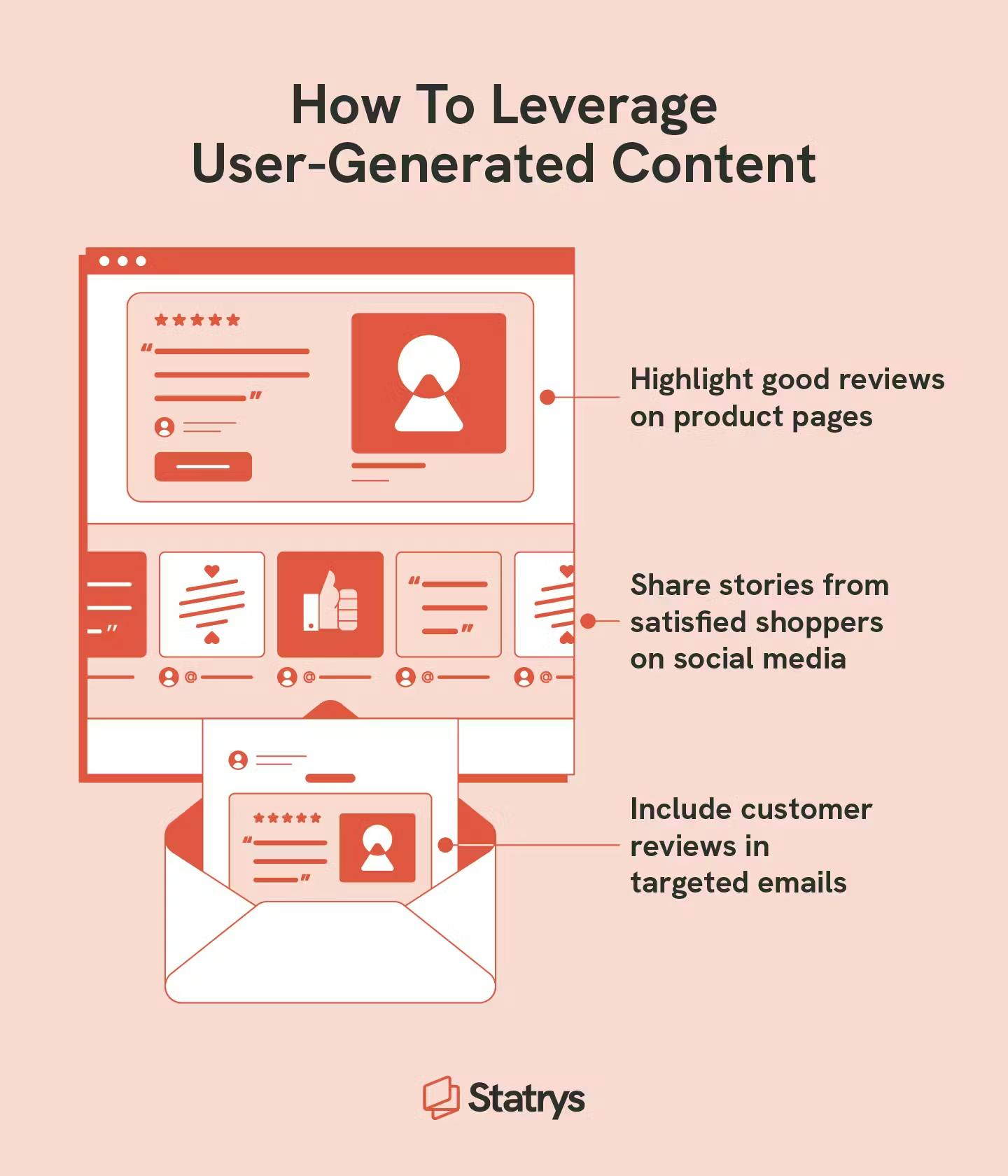
HK

HK

Online shopping isn’t going anywhere. The amount people spent shopping online grew to $2 trillion (yes, trillion) worldwide in 2022. But that doesn’t mean every ecommerce store is getting an equal bump in sales. If you want a piece of that pie, you need to know how to start your own store and check out tips for how to grow an ecommerce business.
We’ve gathered tips and strategies from entrepreneurs and the owners of successful ecommerce stores who’ve been there and done it before to help give you a leg up on your competition.
We’ve pared their learnings into 11 strategies for 2025, including:
Now let’s turn a profit, shall we?
Market research is one of the best ways to differentiate your ecommerce business from your competitors. When you understand a customer on a deep level, you’ll have a better understanding of their needs, their buying habits, how they prefer to pay, and how they want you to communicate with them.
Market research should be an ongoing project. Here are some ways to continue learning more about your customers:
This kind of research will help your business make better choices about the products you offer, how you market your business, and how you build your brand by better aligning with what your customers are buying and the kinds of businesses they are buying from.

The most important part of growing an online business through marketing is to build a marketing strategy that will resonate with potential customers. Performing market research, including surveying your existing customers, can point you toward the platforms that will be most effective.
Here’s how to start building a marketing plan:
Your marketing needs may be more or less intensive, but taking all of the above factors into account can help you maximize your time and monetary investment.
The idea of expanding into new markets — whether that means opening a new physical store or expanding the reach of your ecommerce shop by shipping to new countries — might seem daunting, especially if your online store is relatively new. But not doing it could mean you’re leaving money on the table.
Three markets to consider expanding to, if you haven’t yet:
If you have the ability, expanding into multiple new markets could transform your brand into a household name. Make sure you learn as much as you can from each expansion and apply the lessons to other markets.
Even though email may seem to be falling out of fashion, the truth is that it’s still a powerful and fast way for you to communicate with customers (as long as they aren’t being marked as spam). A recent study found that a majority of consumers (57%-79% depending on generation) prefer contact from brands to come through email.
The shotgun approach of sending all emails to all subscribers just doesn’t work. What will make an email strategy successful is building campaigns based on what your customers are actually interested in? For example, if your store sells men’s and women’s clothing and a customer has only purchased women’s clothing, sending an email about the newest line of men’s slacks probably won’t result in a sale.
If your email list isn’t segmented, start by sending out a survey to your subscribers to find some demographic information, learn what they want from you, and how often they want these emails. With that information in hand, you can start building out different email lists based on customer profiles.
Think about the last great experience you had with a company’s customer service team. You’ve probably gone back to them or recommended them to people, right? Now think about the last bad customer service interaction you suffered through. Even if that company had a better product or service than its competitors, you’ll probably think twice before going back.
The lesson here is pretty clear: Customer service can have an oversized impact on your bottom line. Investing in improving your customer service can pay off big — and it doesn’t need to be a huge expense.
Here are a few steps you can take to improve customer service:
Making even the smallest adjustments to customer service could make all the difference in turning a potential customer into a loyal one.
Looking for new suppliers isn’t fast or easy, but it can pay off big. A study from IBM found that nearly 70% of outgoing revenue goes to goods and services. Start your search with a little market research to see which companies are out there and how much they charge for products or components. Reach out to a few of them to learn about any volume discounts or other special offers you may be able to take advantage of.
You might also consider looking for suppliers in other countries. There are some important factors to consider when looking overseas, including:
Reevaluate your supply needs as the market shifts in order to limit the amount you spend. This can also help you prevent any hiccups in your production or sales by finding more reliable suppliers.

Even the smallest and most efficient businesses can have waste. If you’ve recently expanded your offerings or it’s been a while since you did a deep dive on your expenses, taking some time to look at where your money is going could save you some cash now and in the future.
From smart chatbots that can answer most customer questions and then correctly route them to the right people, to helpdesk ticketing systems, product management, and accounting software that can track orders and inventory across multiple platforms, using the right ecommerce software can keep costs down.
Considering 59% of online traffic now comes from mobile devices, your site and your ecommerce store need to be as mobile-friendly as possible. Luckily, there are a lot of tools to make that happen.
If you’re on one of the more popular ecommerce platforms, chances are your store is already optimized for mobile.
For safe measure, we recommend verifying that these elements on product pages are in check:
Test your site on phones and tablets to ensure everything works properly and looks good. As mobile ecommerce becomes more and more important to consumers, updating and refreshing your store so it’s usable on these devices will pay off.

Collecting reviews and feedback and then highlighting those wins in marketing materials and product listings is an excellent method for gaining the trust of new customers. By putting the things other shoppers have said front and center, you’re demonstrating faith in your products while also connecting to prospective customers who are looking for social proof that your company is the right choice.
If you aren’t collecting reviews and ratings for the products on your site, start doing so. You can get these reviews and ratings by:
If you start digging and find a lot of reviews that are raising the same concerns, use that information to make changes to what or how you sell. Learning from your mistakes goes a long way toward establishing credibility and showing customers that you’re listening to and addressing their concerns.
There’s no single way to market or sell a product or service. Segmenting your customer base and personalizing marketing content is the first step toward a better strategy, but it needs to be tested.
By designing several strategies and testing them independently, you’ll develop a more complete profile of your customers and learn what parts of your marketing and sales strategies are going to scale and have a positive impact on your bottom line. Here’s what a few examples of A/B testing might look like:
Don’t be afraid to get creative when A/B testing. Trying something wildly different (like offering products through social livestreams) from what you normally do may give you insight into what your customers want that you didn’t have before.
Improving customer retention is about meeting their needs better than anyone else can. Offering better support, competitive prices, and the highest quality products is vital to maintaining customer loyalty, but there are other ways to show existing customers you care, like providing:
Showing your appreciation to loyal customers can go a long way in establishing a solid customer base for years to come.
If these ideas for how to grow an ecommerce business have you interested in extending your reach into foreign markets like Hong Kong, make sure to research local regulations and requirements first. Depending on where you want to expand, you may need to apply for a business license or bank account in those countries.